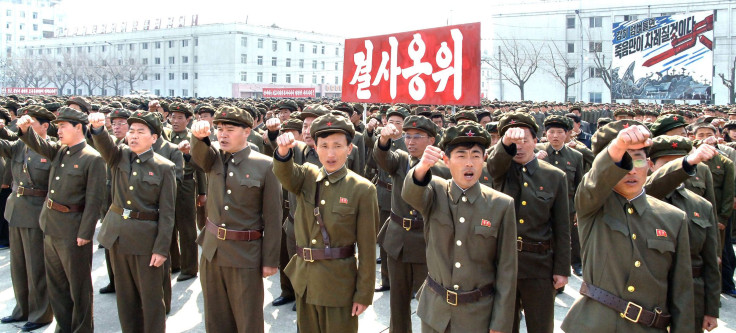US Sending Missile Defense To Guam After N. Korea Threat; North 'Ratifies' Attack on US

This is a developing story.
[5:30 p.m. EDT] White House Press Secretary Jay Carney played down the blood-curdling declaration from North Korea.
"The behavior of the regime in Pyongyang that we are seeing now represents a familiar pattern," Carney told reporters aboard Air Force One, The Hill reported. "So we are taking the necessary precautionary measures, but it is important to view this within the context of the kind of behavior that we’ve seen out of North Korea in the past."
[5 p.m. EDT] North Korea says it had "ratified" a merciless attack against the United States, potentially involving a "diversified nuclear strike."
"We formally inform the White House and Pentagon that the ever-escalating U.S. hostile policy toward the DPRK (North Korea) and its reckless nuclear threat will be smashed by the strong will of all the united service personnel and people and cutting-edge smaller, lighter and diversified nuclear strike means of the DPRK and that the merciless operation of its revolutionary armed forces in this regard has been finally examined and ratified," a spokesman for the General Staff of the Korean People's Army said in a statement carried by the English language service of the state news agency KCNA.
********
The Pentagon said Wednesday it was sending an advanced ballistic missile defense system to Guam in the coming weeks, as Defense Secretary Chuck Hagel cited a "real and clear" danger from North Korea.
North Korea has singled out bases in Guam, a U.S. territory in the Pacific, and Hawaii among its potential targets in escalating threats that have put all of East Asia on edge and triggered a change in the U.S. defense posture and missile defense planning.
"Some of the actions they've taken over the last few weeks present a real and clear danger," Hagel told an audience at the National Defense University in Washington.
He said those actions had threatened the interests of South Korea and Japan, but he also cited their direct threats against Guam, Hawaii and West Coast of the United States – which Pyongyang claims the capacity to hit.
Shortly after Hagel spoke, the Pentagon said it was deploying a Terminal High Altitude Area Defense system (THAAD), which includes a truck-mounted launcher, interceptor missiles, an AN/TPY-2 tracking radar and an integrated fire control system.
The department said the missile system would be moved to Guam as a "precautionary move to strengthen our regional defense posture against the North Korean regional ballistic missile threat."
"The United States remains vigilant in the face of North Korean provocations and stands ready to defend U.S. territory, our allies, and our national interests," a Pentagon spokeswoman said.
The prime contractor for the THAAD system is Lockheed Martin Corp.(NYSE:LMT), the Wall Street Journal reports. Defense officials said a high-profile deployment of the system might help push U.S. allies to speed the purchase of their own THAAD systems.
A senior administration official said that when THAAD is deployed in Guam, its protection won't reach South Korea. The deployment is aimed at protecting American interests in the region.
Guam is about 2,000 miles from North Korea. Most observers say North Korea is still years away from having the technology to deliver a nuclear warhead on a missile, but it does have plenty of conventional military firepower, including medium-range ballistic missiles that can carry high explosives for hundreds of miles.
© Copyright IBTimes 2024. All rights reserved.











